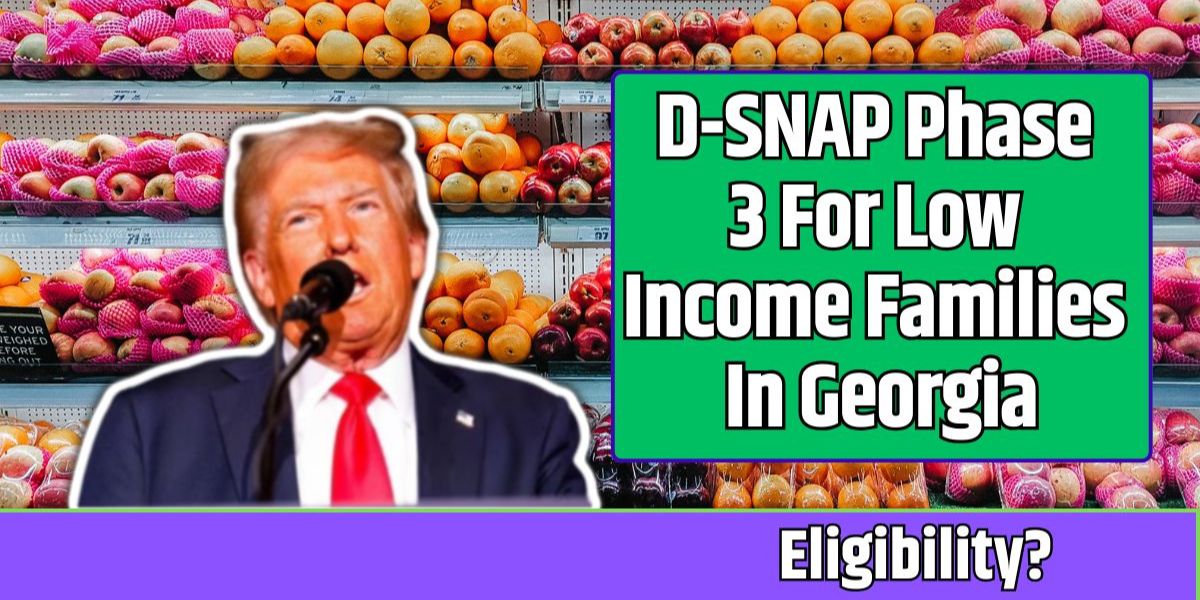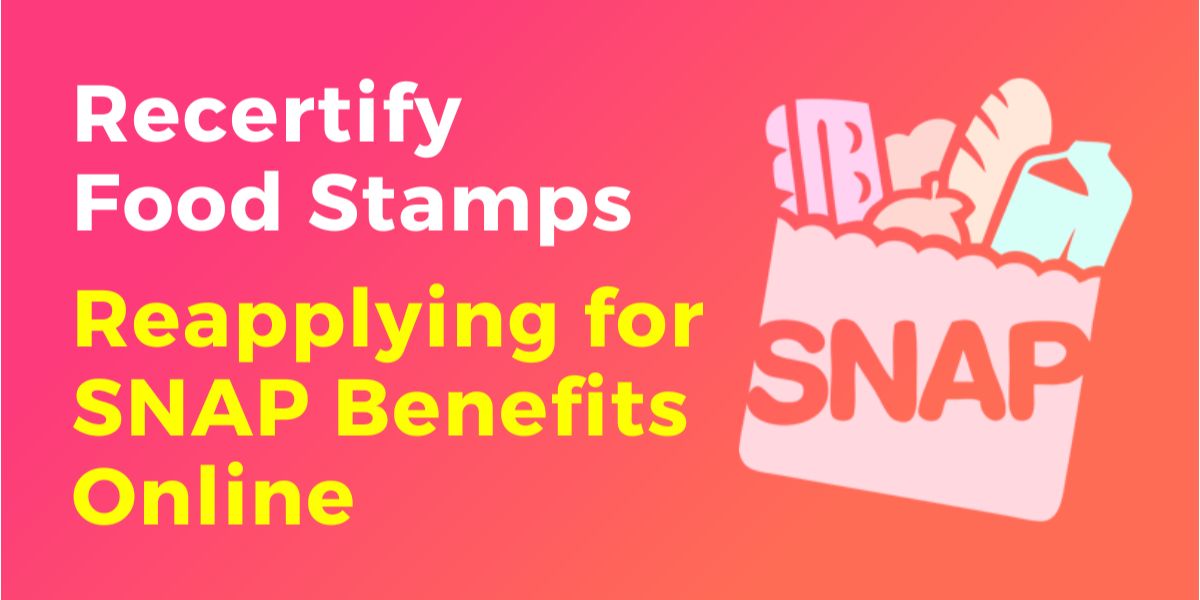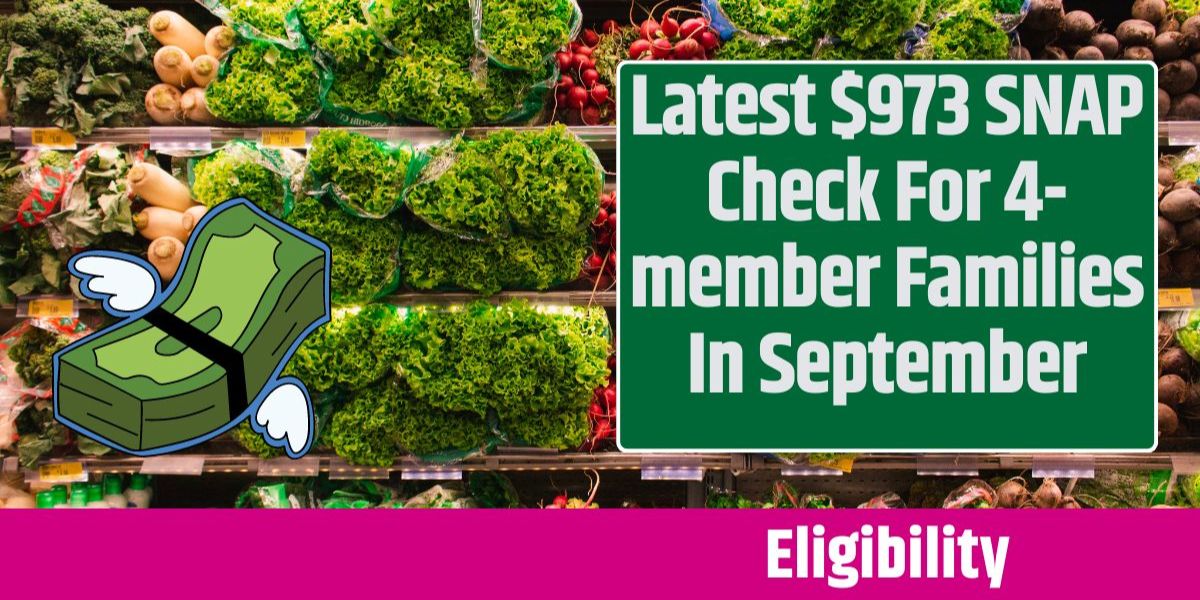MJP –
Residents of Georgia who are struggling with food insecurity following recent disasters now have a critical resource available to them.
The Disaster Supplemental Nutrition Assistance Program (D-SNAP), which provides temporary food assistance to eligible low-income households affected by disasters, has moved into Phase 3 in the state.
This phase marks a key milestone in the state’s effort to support individuals and families facing hardship after a disaster, such as hurricanes, severe storms, or other emergencies.
In this article, we break down what Phase 3 of D-SNAP entails, how Georgia residents can apply, and what to expect from the program.
What is D-SNAP?
D-SNAP, or Disaster SNAP, is a federal program that temporarily increases food assistance for low-income households in the aftermath of a disaster. It provides eligible residents with an electronic benefit transfer (EBT) card that can be used to purchase food. This program is meant to help families who have been affected by disasters and may not have access to food due to loss of income, home displacement, or damage to food supplies.
The program is administered by the Georgia Division of Family and Children Services (DFCS) in coordination with the U.S. Department of Agriculture (USDA). D-SNAP benefits are designed to be temporary and are intended to support affected households until they can get back on their feet.
What is Phase 3 of D-SNAP?
Phase 3 of the D-SNAP process refers to the final phase of benefits distribution in Georgia. This phase is crucial as it allows eligible households in the final designated counties to apply for and receive food assistance.
The state has divided the rollout of D-SNAP into multiple phases, with Phase 1 and Phase 2 serving the most impacted areas first. Phase 3 involves opening the application process to the remaining eligible counties, which allows even more people affected by recent disasters to apply for assistance.
Who Is Eligible for D-SNAP in Phase 3?

Eligibility for D-SNAP is based on several factors, including income, household size, and the extent of disaster-related damages. While standard SNAP (food stamps) benefits are based on regular monthly income and household size, D-SNAP eligibility takes into account the temporary disaster situation, such as loss of income due to job disruptions or destruction of food supplies.
2025 SNAP COLA Update: New Payment Schedule for October Benefits
To qualify for Phase 3 benefits, applicants must meet the following general criteria:
- Income: Households must meet the D-SNAP income limits, which are usually higher than the standard SNAP limits due to the disaster circumstances. Families that have had their income significantly reduced or disrupted due to the disaster may still be eligible.
- Residency: The applicant must be a resident of Georgia and live in a designated disaster area. The Georgia DFCS provides a list of counties eligible for D-SNAP assistance in Phase 3, which typically includes areas most heavily impacted by the disaster.
- Disaster Impact: Applicants must have been affected by the disaster, either by losing food, income, or housing. This can include those who have experienced loss of power, food spoilage, or damage to homes that left them unable to access food.
- Temporary Need: D-SNAP is a short-term program, so the assistance is meant to help households only until they can stabilize after the disaster.
How to Apply for D-SNAP in Georgia (Phase 3)
Georgia residents can apply for D-SNAP benefits through several methods. Here’s how to apply:
1. Online Application
The Georgia Gateway website is the primary platform for applying for D-SNAP benefits. Residents can create an account on the website and fill out the application for disaster benefits. The website also allows applicants to check their eligibility and track the status of their application.
2. In-Person Application
In addition to online applications, some Georgia residents can apply in person at local DFCS offices or disaster assistance centers set up by the state in the wake of the disaster. This option may be particularly helpful for individuals who do not have reliable internet access.
3. Phone Application
For those who cannot access the online portal or visit in person, phone applications may be an option. The Georgia DFCS provides a toll-free number to call for assistance with the application process. Through this system, applicants can apply over the phone and have their eligibility assessed.
What Documents Will You Need to Apply for D-SNAP?
SNAP Benefits: $535 in Food Stamps Coming from September 4-15
Applicants should be prepared to provide documents that support their eligibility for D-SNAP benefits. These documents typically include:
- Proof of Identity: A government-issued ID or other documents verifying your identity (e.g., driver’s license, passport).
- Proof of Residence: A utility bill, lease agreement, or similar documents showing that you live in the affected disaster area.
- Income Verification: Pay stubs, unemployment benefits documents, or other proof of income to demonstrate the financial impact of the disaster.
- Disaster Impact Evidence: Information about the specific disaster’s impact on your household, such as loss of food, income, or housing.
Keep in mind that each applicant’s situation may vary, so it’s a good idea to review the specific documentation requirements provided by Georgia DFCS for D-SNAP Phase 3.
How Long Will D-SNAP Benefits Last?
D-SNAP benefits are temporary and typically last for one month. The benefits will help households cover food costs during the immediate aftermath of the disaster. Once the benefits have been used or the disaster period ends, participants will no longer be eligible unless they qualify for regular SNAP benefits through a separate application.
What Can You Buy with D-SNAP Benefits?
D-SNAP benefits are issued on an EBT card, which functions like a debit card. The card can be used to purchase eligible food items at grocery stores, markets, and other approved vendors. These benefits can be used for a wide variety of food, including:
- Fresh fruits and vegetables
- Dairy products
- Meats, poultry, and fish
- Bread and cereal
- Non-alcoholic beverages
- Seeds and plants to grow food
However, D-SNAP benefits cannot be used to purchase non-food items like cleaning supplies, alcohol, tobacco, or prepared hot foods from restaurants (unless part of a restaurant program).
Conclusion: Important Next Steps for Georgia Residents
For Georgia residents who have been impacted by a recent disaster, Phase 3 of D-SNAP provides a vital lifeline during a difficult time. If you are struggling to make ends meet after the disaster, it’s important to check your eligibility, gather the necessary documents, and apply for assistance as soon as possible.
With the ongoing efforts of the Georgia Division of Family and Children Services, the state is working to ensure that all affected residents can access the resources they need to recover and rebuild. If you live in an eligible county, make sure to take advantage of this important assistance program before the application period ends.
For more information about applying for D-SNAP in Georgia, visit the Georgia Gateway website or contact your local DFCS office.




